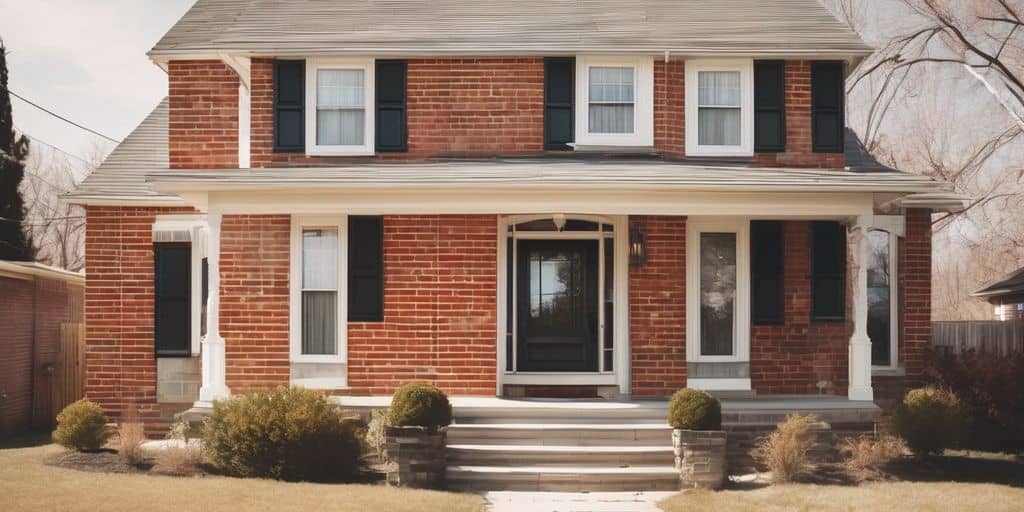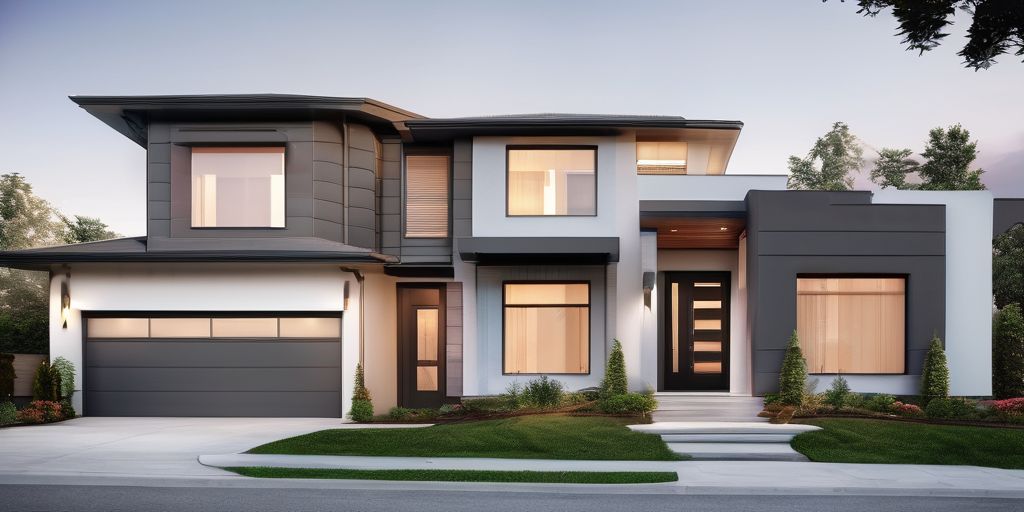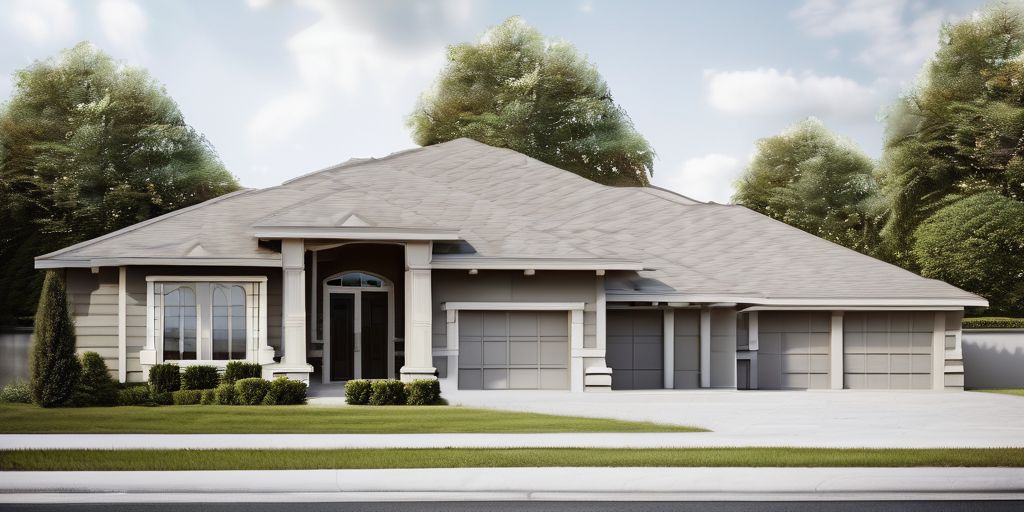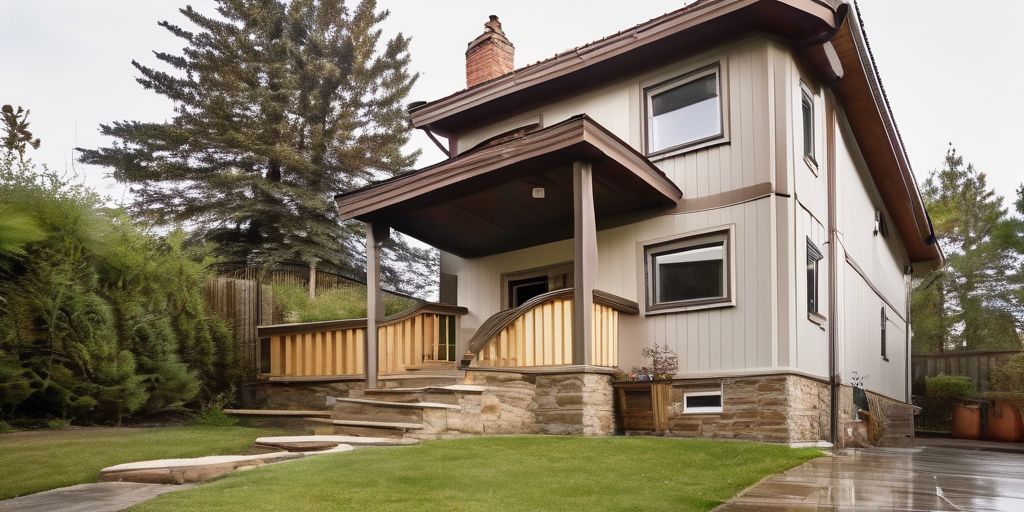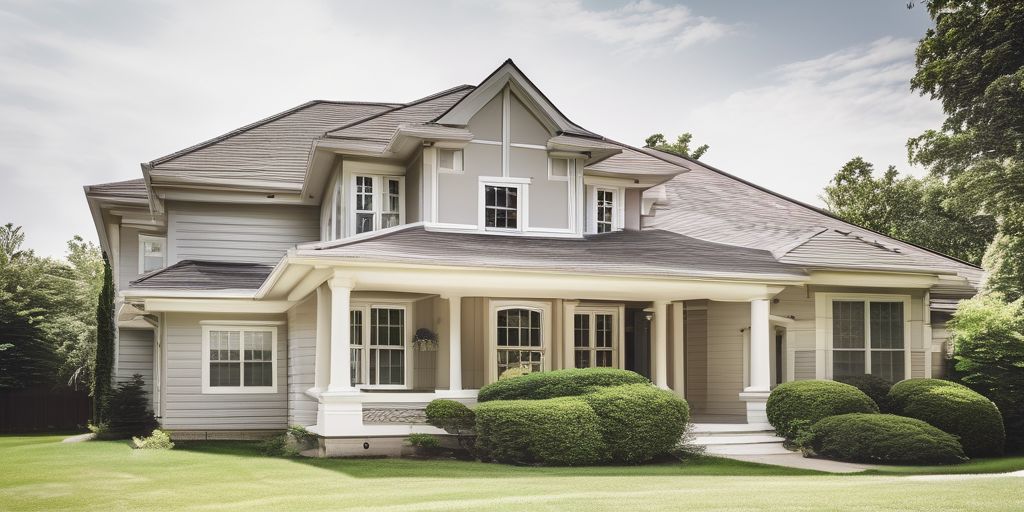Guelph is a city known for its beautiful vintage homes, many of which were built in the 1800s. These old brick houses have a special charm that modern buildings can’t match. Painting the brick on these homes can bring out their unique character and make them stand out even more. In this article, we’ll explore different techniques to paint these historic bricks, from traditional methods to modern approaches, and how to keep them looking their best.
Key Takeaways
- Choosing the right paint is crucial for highlighting the beauty of vintage brick homes.
- Proper cleaning and repair are essential steps before painting old bricks.
- Traditional techniques like limewashing and whitewashing offer classic finishes.
- Modern methods such as spray painting and stenciling provide new ways to decorate brick surfaces.
- Regular maintenance is important to protect painted bricks from weather damage and keep them looking fresh.
Choosing the Right Paint for Vintage Brick
Understanding Brick Porosity
Before you start painting, it’s important to understand that bricks can be porous. This means they can absorb moisture, which can affect the paint’s durability. Knowing your brick’s porosity will help you choose the right type of paint and ensure a long-lasting finish.
Selecting Eco-Friendly Paints
When painting vintage brick, consider using eco-friendly paints. These paints are better for the environment and often have fewer chemicals. Look for paints that are low in volatile organic compounds (VOCs) to keep your home and the environment safe.
Color Schemes that Highlight Heritage
Choosing the right color scheme can make a big difference in highlighting the historical charm of your home. Opt for colors that reflect the heritage of your area. For example, in Guelph, you might choose colors that complement local landmarks like the Dixon Distillery. This can enhance the overall look and feel of your vintage home.
Preparing Your Brick Surface
Cleaning Techniques for Old Brick
Before you start painting, it’s crucial to clean the brick surface thoroughly. Never paint damaged or wet brick. The surface should always be clean, dry, and in good condition before painting, otherwise the process can cause more damage. Here are some effective cleaning techniques:
- Use a stiff-bristle brush to remove loose dirt and debris.
- For stubborn stains, a mixture of water and mild detergent can be applied.
- Avoid using high-pressure washers as they can damage the brick.
Repairing and Restoring Damaged Areas
Inspect the brick for any signs of damage such as cracks or missing mortar. Repairing these areas is essential for a smooth and long-lasting paint job. Follow these steps:
- Remove any loose or crumbling mortar using a chisel and hammer.
- Fill in the gaps with new mortar, making sure it matches the existing color and texture.
- Allow the mortar to cure completely before proceeding with painting.
Priming for Long-Lasting Results
Priming the brick surface is a key step to ensure the paint adheres well and lasts longer. Here’s how to do it:
- Choose a primer specifically designed for masonry surfaces.
- Apply the primer evenly using a brush or roller, making sure to cover all areas.
- Let the primer dry completely before applying the topcoat.
Proper preparation of the brick surface can make a significant difference in the durability and appearance of your paint job. Taking the time to clean, repair, and prime will pay off in the long run.
By following these steps, you’ll be well on your way to achieving a beautiful and long-lasting finish for your vintage brick home in Guelph.
Traditional Painting Techniques
Limewashing for a Soft Finish
Limewashing is a classic method that gives brick a soft, matte finish. This technique involves applying a mixture of lime and water to the brick surface. Limewash penetrates the brick, allowing it to breathe while providing a unique, aged appearance. It’s an eco-friendly option that has been used for centuries. To achieve the best results, ensure the brick is clean and slightly damp before application. Limewashing is ideal for preserving Cambridge’s brick heritage through careful painting techniques.
German Smear for a Rustic Look
The German Smear technique creates a rustic, textured look by spreading a mortar mix over the brick and then partially removing it. This method gives the brick an old-world charm, reminiscent of historic European homes. The process involves:
- Mixing mortar to a peanut butter consistency.
- Applying the mortar to the brick using a trowel or your hands.
- Partially removing the mortar before it fully dries to expose some of the brick underneath.
This technique is perfect for those looking to add character and a sense of history to their homes.
Whitewashing for a Classic Appeal
Whitewashing is a simple and effective way to lighten the appearance of brick while still allowing the texture to show through. This technique involves diluting white paint with water and applying it to the brick surface. The result is a soft, white finish that can brighten up any space. Whitewashing is particularly popular for balancing aesthetics and longevity in brick painting. To whitewash your brick:
- Clean the brick thoroughly.
- Mix white paint with water (usually a 1:1 ratio).
- Apply the mixture with a brush or sponge.
- Wipe off excess paint to achieve the desired look.
Whitewashing is a versatile technique that can be adjusted to achieve the level of coverage you prefer.
When considering traditional painting techniques, it’s essential to think about the long-term impact on your home’s appearance and durability. These methods not only enhance the beauty of your brick but also contribute to the historic preservation of your property.
Modern Approaches to Brick Painting
Using Masonry Paints
Masonry paints are specially designed for brick surfaces. They offer excellent durability and weather resistance. When choosing masonry paint, consider the porosity of your brick to ensure proper adhesion. These paints come in a variety of colors, allowing you to select hues that complement your home’s exterior. Bold hues can make a striking statement, while more subdued tones offer a classic look.
Spray Painting for Even Coverage
Spray painting is an efficient way to achieve even coverage on brick surfaces. This method is particularly useful for large areas or intricate designs. To get started, you’ll need a spray paint machine and proper safety gear. Here are the basic steps:
- Clean the brick surface thoroughly.
- Mask off areas you don’t want to paint.
- Apply a primer if necessary.
- Spray the paint in even, sweeping motions.
- Allow the paint to dry completely before applying a second coat.
Stenciling for Decorative Touches
Stenciling can add unique, decorative touches to your brickwork. This technique is perfect for creating patterns or designs that stand out. You can use stencils to create borders, focal points, or even innovative brick accent painting techniques. Here’s how to stencil your brick:
- Choose a stencil design that fits your style.
- Secure the stencil to the brick with painter’s tape.
- Use a stencil brush or sponge to apply the paint.
- Carefully remove the stencil and let the paint dry.
Stenciling allows you to blend traditional styles with modern aesthetics, making your brickwork visually appealing and durable.
Whether you’re aiming for a rustic look or a more contemporary feel, these modern approaches to brick painting offer a range of options to suit your taste.
Maintaining Your Painted Brick
Regular Cleaning Tips
To keep your painted brick looking fresh, regular cleaning is essential. Get the bricks wet before applying any cleanser. This helps to prevent the paint from chipping or peeling. Use a mild detergent mixed with water and a soft brush to scrub the surface gently. Avoid using harsh chemicals as they can damage the paint and the brick.
Touch-Up Techniques
Over time, your painted brick may develop small chips or cracks. To touch up these areas, first clean the spot thoroughly. Then, use a small brush to apply a matching paint. For larger areas, you might need to repaint the entire section to ensure an even finish. Always keep a small amount of the original paint for these touch-ups.
Protecting Against Weather Damage
Weather can be tough on painted brick, especially in areas with extreme temperatures. Spring and summer are the best times to paint your home’s exterior. Warm weather is good for dry time, but ensure it’s not too hot or humid. Applying a sealant can also help protect the paint from moisture and UV rays. Make sure to reapply the sealant every few years for continued protection.
Regular maintenance not only keeps your brick looking great but also extends the life of the paint job. Taking these steps can save you time and money in the long run.
Showcasing Guelph’s Painted Heritage Homes
Guelph is home to many beautifully painted heritage homes that reflect the city’s rich history and charm. These homes are not just buildings; they are stories waiting to be told. People will learn many great stories about Guelph’s history and heritage and will learn to be even more proud of our past and present uniqueness and accomplishments.
Notable Examples Around Town
- The Hammond Radio Museum on Southgate Drive is a must-see. This site is part of the Doors Open Ontario initiative, celebrating community heritage.
- The Basilica of Our Lady Immaculate is another stunning example of Guelph’s architectural treasures.
- Many buildings at the University of Guelph, like Johnson Hall and War Memorial Hall, also showcase beautiful brickwork.
Inspiration from Local Landmarks
- The Guelph Hydro building and Sleeman Breweries are modern yet interesting buildings that blend well with the city’s heritage.
- The Dixon’s Distilled Spirits building is another example of how modern structures can still honor historical context.
- The Petrie Building and the Field Artillery Regiment building are also worth noting for their unique architectural features.
Community Efforts in Preservation
- Events like Doors Open Guelph aim to showcase some of the city’s most interesting buildings and spaces. This annual event attracts around 6,000 people to its free tours of featured sites.
- Local dentists have done an amazing job of restoring old houses to be modern medical offices while keeping their heritage context intact.
- Community efforts are crucial in preserving these historical sites, making Guelph a city that beautifully blends history with modernity.
DIY vs. Professional Painting Services
Pros and Cons of DIY
Taking on a brick painting project yourself can be both rewarding and challenging. One major advantage is the cost savings, as you won’t need to pay for labor. Additionally, you have complete control over the process, from choosing the paint to applying the final coat. However, DIY projects can be time-consuming and physically demanding. Mistakes can also be costly to fix, especially if you lack experience.
Finding a Reputable Painter in Guelph
If you decide to hire a professional, finding a reputable exterior painter in Guelph is crucial. Look for painters with good reviews and a portfolio of past work. You can ask for recommendations from friends or check online forums. It’s also a good idea to get multiple quotes to compare prices and services.
Cost Considerations
When comparing DIY to professional services, cost is a significant factor. Here’s a simple table to help you understand the potential expenses:
| Expense Type | DIY Cost Estimate | Professional Cost Estimate |
|---|---|---|
| Paint and Supplies | $200 – $500 | Included in service |
| Tools and Equipment | $100 – $300 | Included in service |
| Labor | Free | $500 – $2000 |
Whether you choose to DIY or hire a professional, preparing your house properly is key to achieving a long-lasting finish.
In Guelph, landmarks like the Red Brick Café on Douglas Street showcase the beauty of well-maintained brickwork, offering inspiration for your own project.
Thinking about painting your home? Should you do it yourself or hire a professional? DIY painting can save money, but it takes a lot of time and effort. On the other hand, professional painters have the skills and tools to do the job quickly and beautifully. If you want to learn more about our services, visit our website today!
Conclusion
Painting the bricks of Guelph’s vintage homes is more than just a way to freshen up their look. It’s a way to honor the rich history and unique charm that these buildings bring to our community. Whether you’re a homeowner looking to add a personal touch or a history lover wanting to preserve the past, these retro painting techniques offer something special for everyone. So, grab your paintbrush, pick your colors, and get ready to transform your home into a beautiful piece of Guelph’s heritage. Happy painting!
Frequently Asked Questions
What kind of paint works best on old bricks?
For old bricks, you should use breathable paint that allows moisture to escape, like lime-based or mineral paints. These are eco-friendly and preserve the brick’s natural look.
How do I clean old bricks before painting?
Use a soft brush and water to clean old bricks. Avoid using harsh chemicals as they can damage the brick. For stubborn dirt, a mixture of water and mild detergent works well.
Can I paint damaged bricks?
Yes, but you should repair any cracks or holes first. Use a brick repair kit to fill in damaged areas, then sand it smooth before painting.
What is limewashing?
Limewashing is a technique where you apply a thin layer of lime-based paint to bricks. It gives a soft, chalky finish and lets the brick breathe.
Is spray painting good for brick?
Spray painting can give an even coverage, but it’s best for large, flat areas. Make sure to use masonry paint and protect surrounding areas from overspray.
How do I maintain painted bricks?
Regularly clean your painted bricks with a soft brush and mild detergent. Touch up any chipped areas and apply a weather-resistant sealant to protect against the elements.

